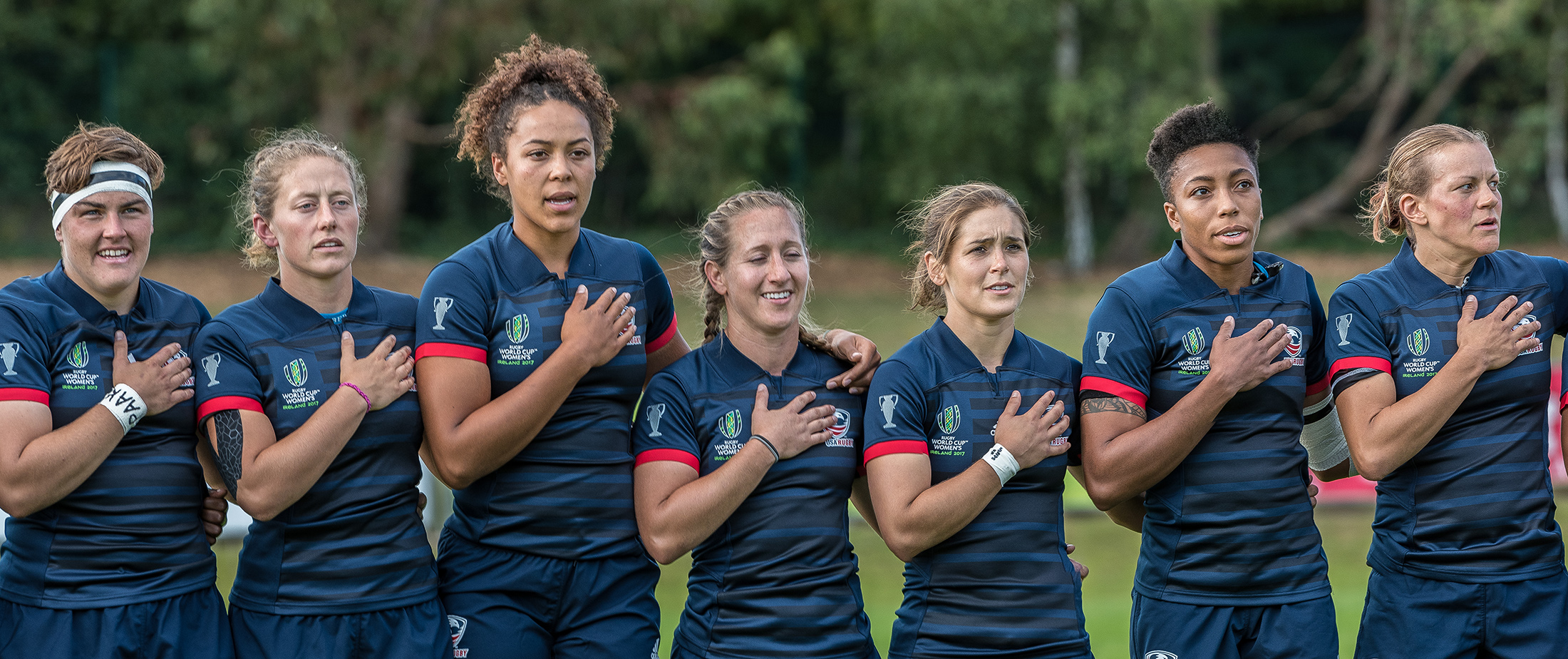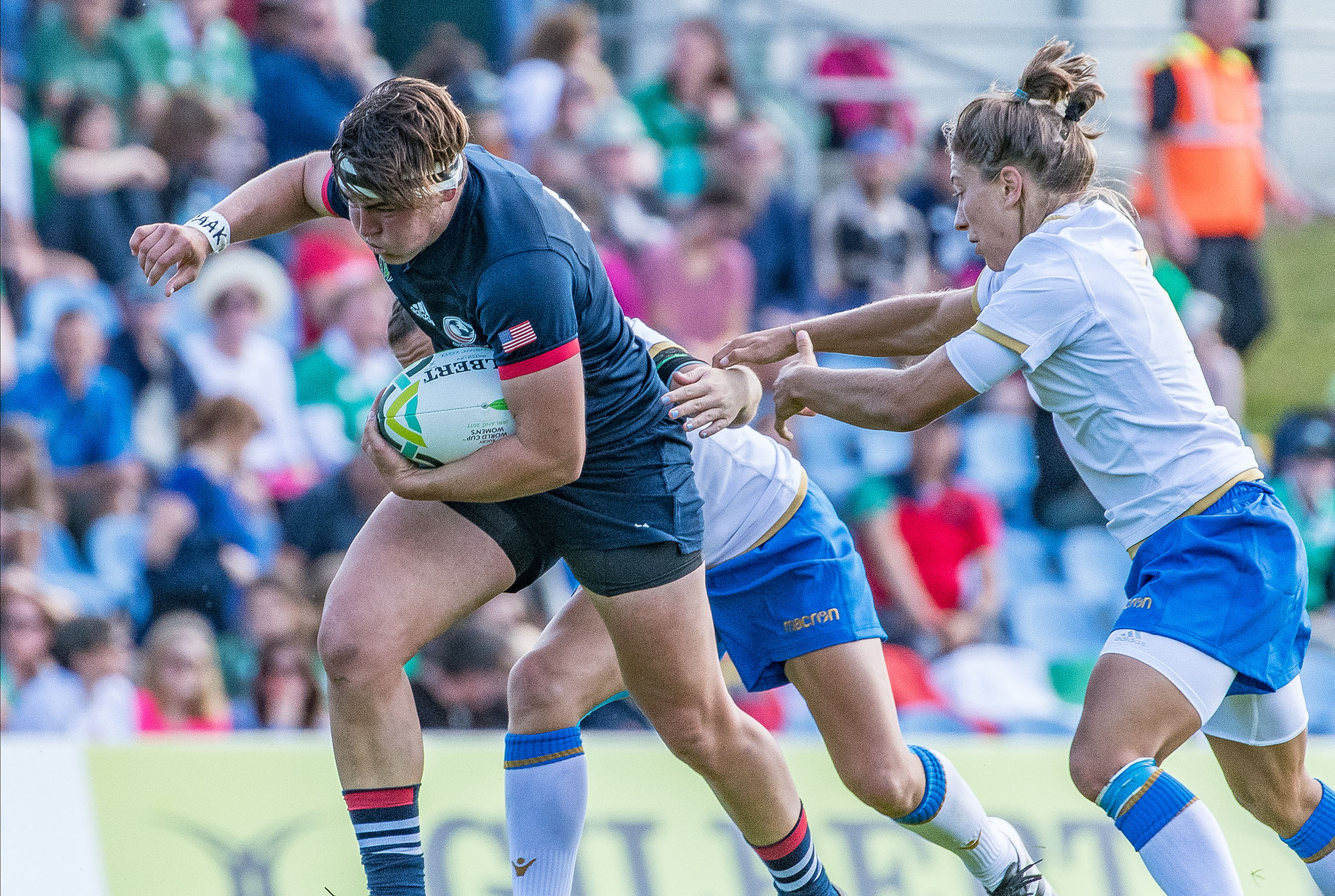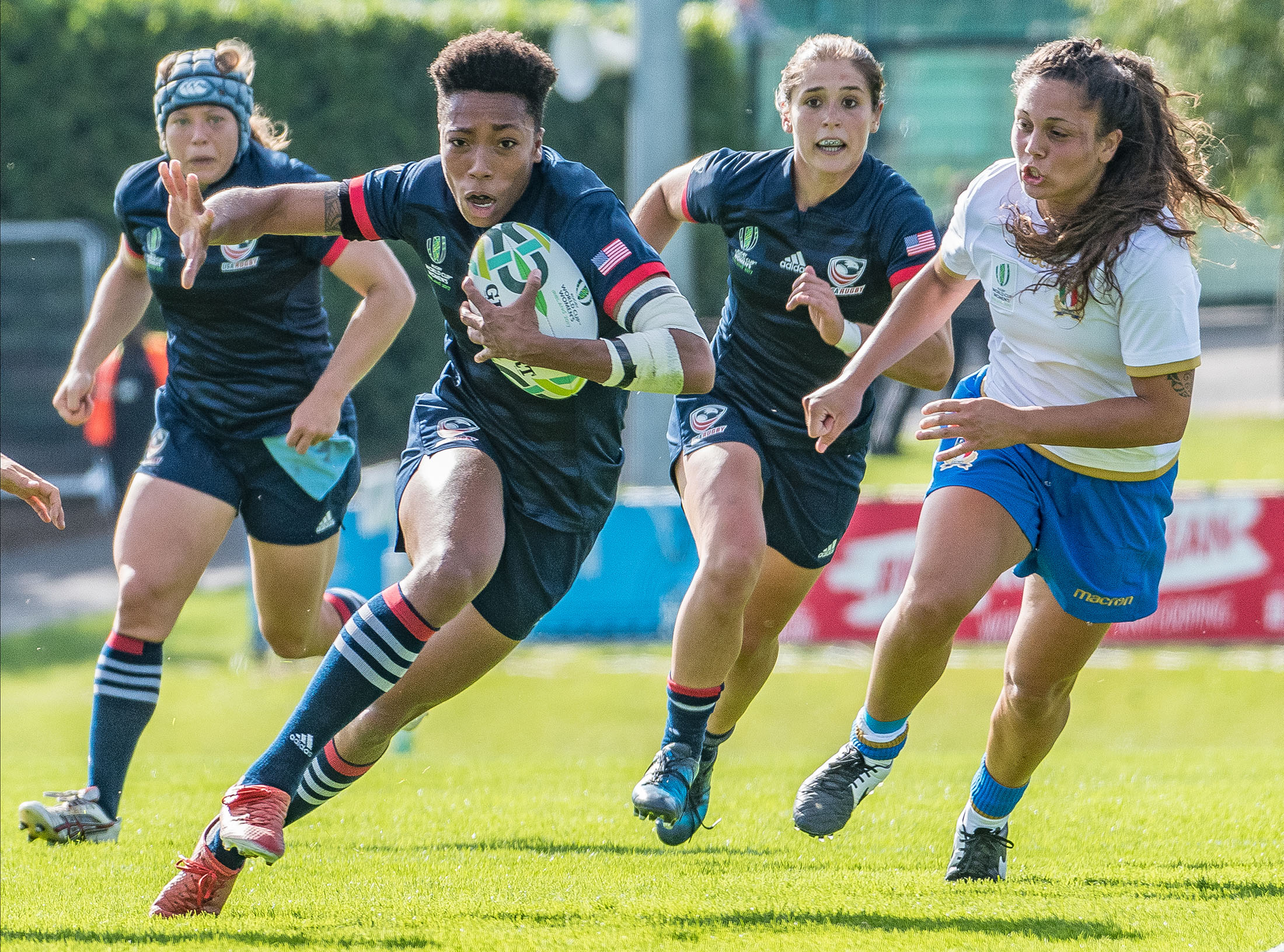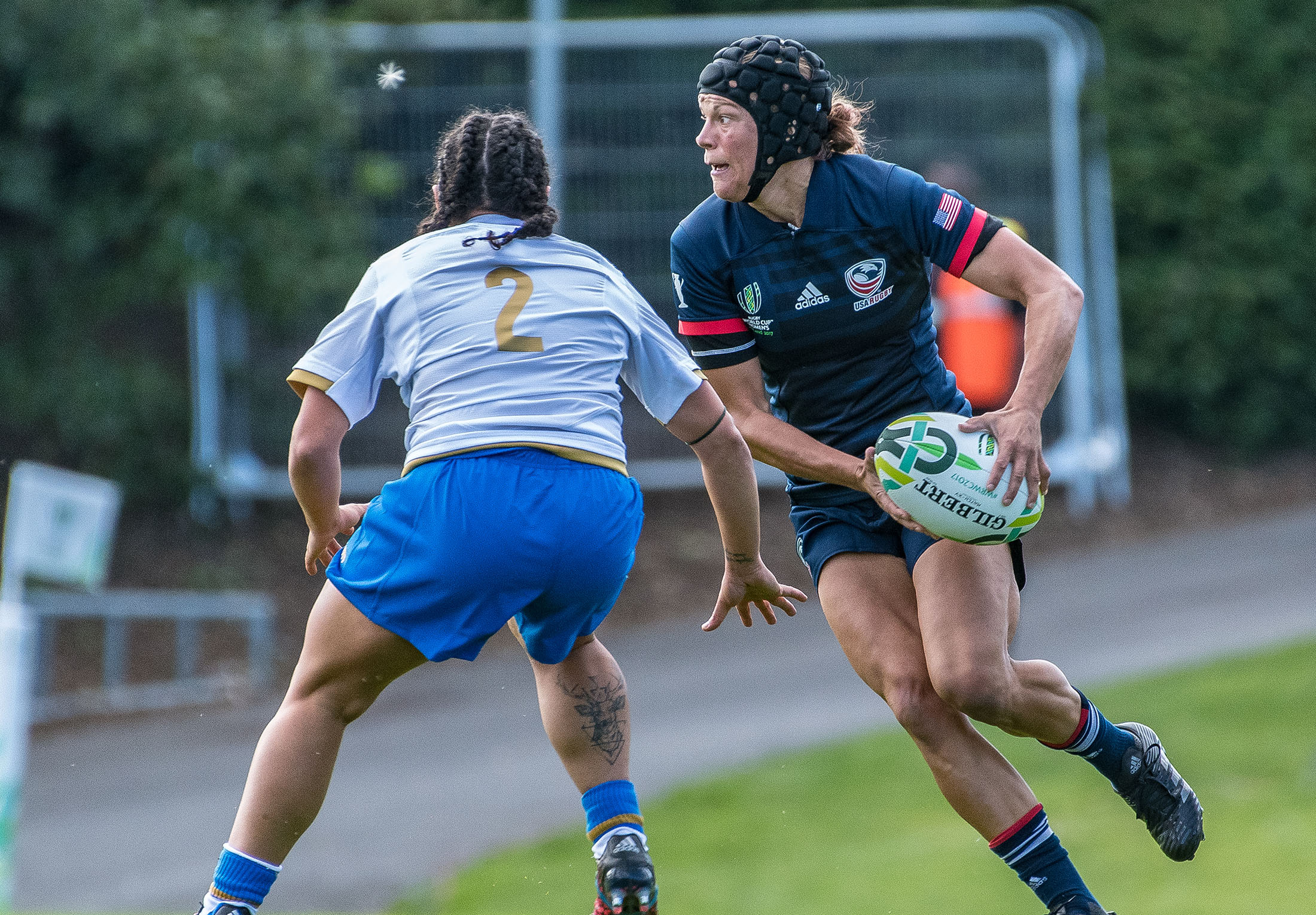
All of these players have 7s and 15s caps. / Photo: Colleen McCloskey
In the second Pete Steinberg-driven piece, the USA coach talked about changes that need to happen at the international level – issues that are not unique to the 2017 Women’s Rugby World Cup (WRWC) but still need attention. The same can be said for the USA Women’s National Team (WNT) and its needs, and fortunately, outgoing Eagles coach Steinberg will remain a vocal advocate for those changes.
RELATED: Steinberg Part 1: USA at the World Cup • Steinberg Part 2: World Rugby’s Role • Meet the GHSAAs Heading to France
Eight players brought previous World Cup experience to the 2017 WRWC Eagle squad. A larger portion of players were inducted into the national pool during the 2015 Super Series, and a shortened World Cup cycle (three years instead of four this iteration) exacerbated the need for field time. Fixtures is a continual issue, one that won’t disappear even as the 7s World Cup and 2019 Men’s World Cup attract attention the upcoming two years.
“The challenge we had at the World Cup was we hadn’t played enough high-level games so we were inconsistent in our ability to perform at that level under pressure,” Steinberg said. “That’s something you can only get at that level when you play. When we look at our players – 17 new caps were awarded in 2015 and something like 10 or 12 from that Super Series made it to the World Cup. If they had played every game since then, they would have had [10] caps. That’s not enough for those players.”
There were also players who had never been capped who traveled to Ireland. Steinberg pointed out that when Eagle prop Nick James came on for her first-ever cap, she lined up against England prop Rochelle Clark, who has 129 caps.
England is certainly leading the way in fielding a robust elite club competition paired with a good international 15s schedule. The U.S. is different than England, Canada, New Zealand, France – from the vastness of the country to the popularity of the sport – and thus must find solutions that speak to it uniquely. For the U.S., that has meant consolidating resources into one pool of national players, versus separating them into 7s and 15s pools. That strategy was especially apparent during the 2016-17 World Rugby Women’s Sevens Series.

2017 WRWC Dream Team-er Sara Parsons played 7s this year. / Photo: Colleen McCloskey
“Probably what we need to talk about is not 7s and 15s; it’s just rugby players. Hope Rogers, Jordan Gray, Sara Parsons – they’ve all played 7s and 15s,” Steinberg said of USA forwards who earned 7s caps this year. “It’s just rugby players who need more competitive rugby.”
For Steinberg, that doesn’t necessarily include 7s players joining the Women’s Premier League for more 15s. The coach said the domestic competition isn’t strong enough yet to make it worthwhile for contracted 7s players; however, there is a way to get them more 15s field time.
“If World Rugby can help us develop an international structure and if [the National All-Star Competition, NASC] can continue, then I think we can provide enough 15s games annually so they can develop as rugby players in that environment,” Steinberg said. “If we could get six tests a year and provide another four high-level matches at NASC, and those 7s players are playing 7s on the circuit, now you’re at the point of 15-20 matches, and that’s about right.”

(l-r) Augustyn, Thomas, Rozier – who will be back for 2021? / Photo: Colleen McCloskey
Fortunately, there were so many young players on the World Cup squad that the USA could return much more experience in 2021. That was the plan back in 2015 when all of those new caps were awarded – to get out of those four-year cycles. One would expect that trend to continue in summer/fall 2018 – the next likely date for an international test – but that will of course depend on the new head coach. Steinberg referenced the youth pressuring from the age grades, which he counts among his successes as USA head coach.
“The one thing I’ve always talked to players about, especially at Penn State, is always leave the program better than we found it,” Steinberg said. “What I feel most happy about is that I did that with the Eagles. The age grades are more unified, there’s a better player identification system, and the player pool will be something the next coach can really work with.”
USA Rugby has not formally announced the head coach search, but one would expect World Cup and age-grade staff to be candidates. That said, Steinberg isn’t going anywhere soon.

Braaten was one of eight players who had previous WRWC experience. / Photo: Colleen McCloskey
“At the close of camp, players were talking about what’s next. I told them that I’ll be an advocate for the program going forward even though I’m not the coach, and get the resources needed to be competitive,” Steinberg said.
“I have a voice and I’m going to continue to speak up for the women’s game,” he continued. “I have connections that could provide some financial support that might be required moving forward. As much as I can I’ll work with USA Rugby making sure they have what they need.”
Steinberg still feels a great need to give back to the sport and wants to spend more time on coach development, an area for which he’s very passionate and began pursuing before his involvement with the national team. As for the USA WNT, the next big questions revolve around the new coach and the next wave of promising talent, and also USA Rugby’s response to the renewed call for more support.


